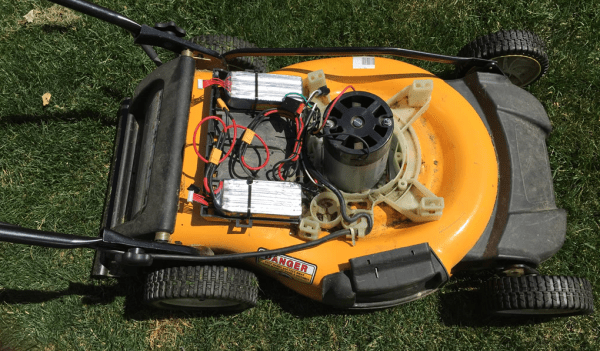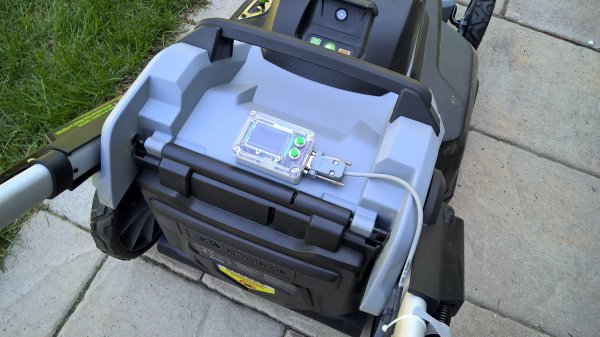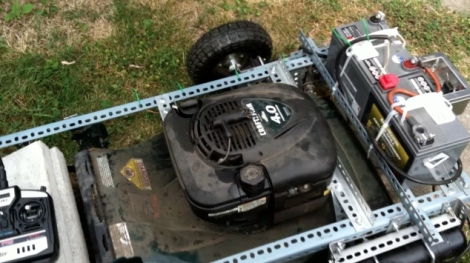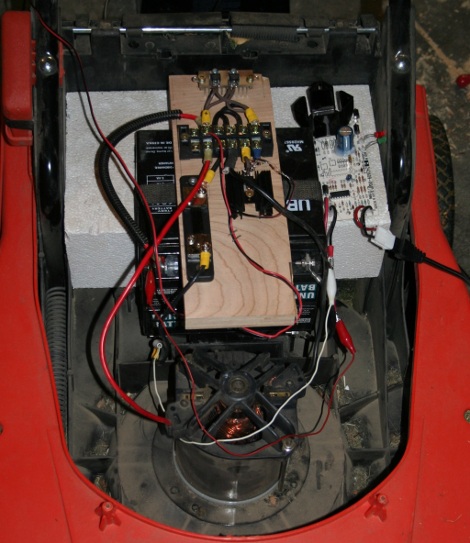Back in 2010, [Dave] took a stand. He gave up his dependence on gasoline for his lawn mower, and bought a CubCadet CC500 48V lead acid powered electric lawnmower. Within two years, the batteries had already kicked the bucket. Unwilling to let go, he replaced half of the batteries, but that wasn’t enough. It now took him two charging cycles to mow his lawn once
Enough was enough. He had to replace the whole set — but this time, with LiPo.
As an avid lover of drones, he’s been using LiPo batteries for other things for quite a while. He did some calculations and figured he would only need about 10,000mAh at 48V for a 40 minute run time, which would still be a pretty pricey upgrade. So instead he started with 2 x 22.2V 5,200mAh packs instead ($200). As it turned out, that was more than enough.
The circuitry in the CubCadet was pretty straight forward, so it was almost a drop in replacement, minus the need to use a different charger. He added in a switch to flip between charging and mowing modes to allow him to use the LiPo charger without damaging anything.
Now all he needs to do is give it an Internet connection or maybe make it remote-controlled…


















